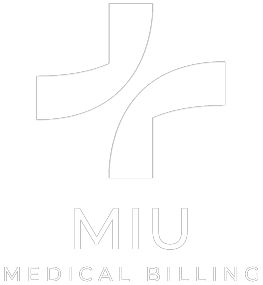Introduction
Medical insurance billing is the central wheel of the healthcare revenue cycle processes. However, due to the factors constituting this process, the errors cost healthcare delivery institutions and patients a lot of money. The knowledge of typical medical billing errors and their prevention can significantly impact the financial results of medical practices.
1. Incorrect Patient Information

Many instances of medical insurance billing begin with incorrect data of the patient involved in the billing process. Typos in names, dates of birth, or insurance policy numbers will likely result in claim rejection and delayed payment. To overcome these mistakes, ensure you use a robust verification system when checking in patients. Ensure that all your employees double-take every single demographic aspect of the patients every time they visit you. Maximize the use of neonatal systems to manage medical billing to minimize omissions.
2. Improper Coding
The problem of improper coding has not ceased to be one of the significant challenges in medical insurance billing. This is usually a recipe for claim rejection or even fraud when one uses codes that have been outdated, pairing procedures with wrong diagnoses, or even using higher codes than required for a particular procedure. Ensure you’re current with new coding releases and recurrent billing staff training. This means that when inexperienced coders, for instance, frauds, make claims, they want to be checked by experienced coders before they submit them. One should suggest using coding software to help avoid wrong coding of medical billing procedures.
3. Missing or Incomplete Documentation
Another challenge would be the need for more documentation in medical insurance billing. Inadequate record keeping could result in rejected claims, delayed payments, or no payment. Inform Healthcare Providers and Health Teams of the Need for Perfect Documentation. Use form templates to standardize the processes for completion to ensure that none of the relevant data points are missed. Review the medical records for your clients to discover the loopholes to cover in your medical billing.
4. Failure to Verify Insurance Coverage
In such circumstances, carrying out your services without confirming whether a patient’s insurance will cover them is unwise since this leads to unpaid claims and losses. The control calls for adopting a pre-authorization practice in the medical insurance billing system. Use the real-time eligibility verification systems to check coverage details before consulting your doctor. Teach your front desk personnel to detail any coverage or responsibility the patient may have so as not to be told later during medical billing.
5. Missed Filing Deadlines
Every payer has particular and reasonable dates for filing the insurance claims. Failure to meet such deadlines means that health claims get automatically rejected and will, therefore, imply a loss of revenue. An important tracking mechanism should be developed to track the submission dates of the claims during your medical insurance billing. Schedule the automated calendar to remind you of any due date coming nearby. All medical billing practices are suggested to prioritize older claims so that reimbursement can be claimed and achieved on time.
6. Ignoring Claim Denials
Some practices fail to complete the cycle by following the status of denied claims, hence leaving large amounts of money on the table. The last method is to apply a systematic approach to handling denials within the medical insurance billing system. A denial pattern analysis would enable you to determine issues of frequent occurrence so that they can be tackled from their root causes. Ensure that your billing staff is well equipped with knowledge on how to appeal the appropriate denial properly and how to do this.
7. Overlooking Patient Responsibility

Lack of patient copayment, deductible, and coinsurance collection at the point of service results in high accounts receivable and poor cash inflows. Integrate patient responsibility collection in your medical insurance billing system. Let the patients understand their financial responsibilities before they attend the clinics. Accept as many forms of payment as possible and offer options that enable clients to pay the balance outstanding on their medical insurance bills on time.
Conclusion
Medical insurance billing is essential to any healthcare practice as it determines its financial stability. If the above-discussed common mistakes are avoided and preventive measures are incorporated, then there will be a vast enhancement in billing accuracy and efficiency. Medical insurance billing is not easy; one must educate, monitor, and train oneself for improvement. Track the changing market, provide proper training for the workers, and use technologies to optimize medical billing work. By adopting these solutions, you are, therefore, capable of reducing the number of mistakes, avoiding denials, and improving the revenue cycle.




